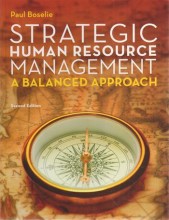Organizations in action - Boek Thompson - Organizations in Action
3 important questions on Organizations in action - Boek Thompson - Organizations in Action
Selecting boundaries is about what activities should be incorporated and what not. What is the line of reasoning of Thompson by placing boundaries?
With structuring the primary process, organizations can also reduce uncertainty. This is about the different types of tasks and ways to coordinate them. How are tasks structured based on Thompson's line of reasoning?
To reduce the costs, Thompson argues the type of task and type of coordination should match. What are the three types dependencies distinguished by Thompson, and corresponding coordination?
- Pooled; with pooled, the activities are relatively autonomous and contribute to a common output. So these tasks are not interdependent. This corresponds with flows in STSD.
- Sequential; first A, then B. One activity depends on the other.
- Reciprocal; interdependence between activities: both need output from each other to go further.
Ways to coordinate:
- Standardization is to coordinate pooled This corresponds with mediating primary process.
- Centralized planning is to coordinate sequential. This corresponds with long linked primary process.
- Mutual adjustment is to coordinate reciprocal. This corresponds with intensive primary process.
The question on the page originate from the summary of the following study material:
- A unique study and practice tool
- Never study anything twice again
- Get the grades you hope for
- 100% sure, 100% understanding

Topics that are related to Organizations in action - Boek Thompson - Organizations in Action
-
Organizations in action
-
Organizations in action - Boek Thompson - Organizations in Action - Rationality in organizations: shielding primary processes
-
Organizations in action - Boek Thompson - Organizations in Action - Domains of organized action: active coping with elements in the task environment
-
Organizations in action - Boek Thompson - Organizations in Action - Organizational rationality and structure































